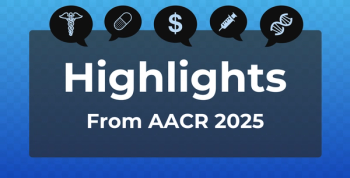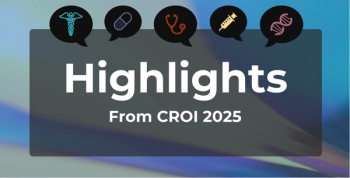
Tapinarof Shows Strong Efficacy, Sleep Benefits in Pediatric AD Across Comorbidities: Druhan Howell, MD
Phase 3 ADORING data show tapinarof improves skin, itch, and sleep in children with atopic dermatitis, with similar efficacy and safety in those with comorbidities.
Tapinarof (VTAMA, Organon) demonstrated safety and efficacy in pediatric patients with atopic dermatitis (AD) in the ADORING phase 3 clinical trial (
Pediatric patients aged 2 to 17 with AD (with and without comorbidities) experienced a significant decrease in disease severity and appearance measured using the Eczema Area and Severity Index with comorbidities and the Validated Investigator Global Assessment Scale for Atopic Dermatitis (vIGA-AD). There was no significant difference between patients with atopic comorbidities and those without.
Patients with moderate-to-severe AD can experience symptoms that disrupt sleep, thus impacting their daily activities and quality of life, said Druhan Howell, MD, a pediatric allergist and immunologist specialist at Coastal Allergy & Asthma, in an interview with The American Journal of Managed Care®.
For patients with and without comorbidities, sleep quality was assessed using a single question from their Patient-Oriented Eczema Measure, which showed improvements as early as week 1 that persisted through week 8.
Common adverse events included upper respiratory tract infection, folliculitis, lower respiratory tract infection, headache, asthma, vomiting, ear infection, pain in the extremity, and abdominal pain. However, they were manageable.
“Less than 2% of patients discontinued with that,” Howell said. “And I do like to share that information in my clinic when I'm talking about the side effect profiles with families—that they are there but well tolerated, and usually we can get past them.”
This transcript has been lightly edited. Captions are auto-generated.
Transcript
What were the differences in vIGA-AD response between children with and without comorbidities, and what do these findings mean for patients with atopic dermatitis?
That's a great question about vIGAs in kids with and without other atopic comorbidities. What we saw when we did this sub-analysis with ADORING 1 and ADORING 2 is that in patients 2 to 17 years of age, there were no differences in the clinical findings between those who had or did not have other allergic comorbidities.
Improvement in vIGA started as early as week 1 and extended all the way out through week 8. And that it's really nice to see that data for our patients and know that a lot of our kiddos, who we are seeing for eczema, have other comorbid conditions when we're seeing them in our clinics.
These new data show meaningful itch reduction as early as week 2, even in children with comorbidities. How could this rapid itch control influence quality of life and treatment adherence?
The POEM scores show consistent and early improvement in itch control again, from week 1 all the way through week 2, in children aged 2 to 17 years old. I think when I am seeing folks in clinical practice, sleep and itch are the things that they're talking to me about a lot. They’ll come in and they'll say, “My kid is itching all the time. They're clawing their skin off. They've got open, raw eczema areas. It looks bad.” It feels bad when you can stop that itch, then it impacts everything.
It's this snowball effect in all these other areas. And I think you see it very clearly in the data for ADORING 1 and ADORING 2, with the POEM scores, their Peak Pruritus Numerical Rating Scale [score], and you see it in their vIGAs; they get skin clearance.
All of our metrics improve as they go along, and those improvements are sustained throughout the use of the drug and in clinical practice. That just leads to a better quality of life and happier parents and happier kids.
What did you observe about adverse events like folliculitis, upper respiratory infections, or headaches in younger patients, and how do you interpret the risk-benefit profile?
Parents are often concerned with safety and tolerability when we're starting new therapies for their kids. You mentioned the primary safety signals with the folliculitis, headaches, and upper respiratory tract infections; those were, even when present, well-tolerated. Less than 2% of patients discontinued with that. And I do like to share that information in my clinic when I'm talking about the side effect profiles with families—that they are there but well tolerated, and usually we can get past them.
In my own clinic and in my own personal experiences, I've started to see these patients back. I haven't had many people come back and respond that they have had or have seen these safety signals personally. That doesn't mean I won't in the future, but at least in the present, I haven't. And I talk about them so patients’ parents are aware, and if they do see them, they can contact me, and we can guide them through. In my own clinical experience, it has not been an issue. But again, it's there in the studies; not many people had to discontinue, which I think is the really important part.
References
1. New data show early and consistent response to VTAMA® (tapinarof) cream, 1%, in children aged 2+ with atopic dermatitis, including those with associated comorbidities. Organon. November 8, 2025. Accessed November 21, 2025.
Newsletter
Stay ahead of policy, cost, and value—subscribe to AJMC for expert insights at the intersection of clinical care and health economics.









































